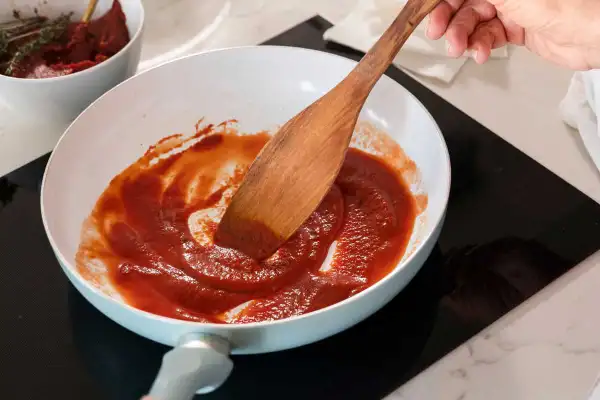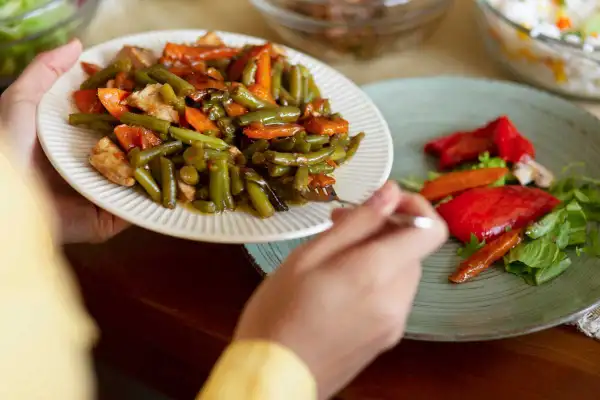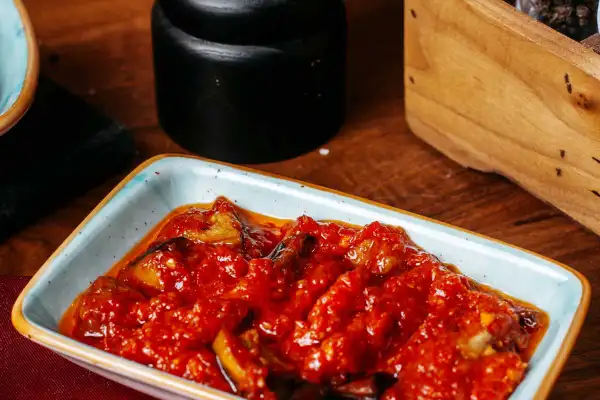Pickles, in general, have been around for ages, right? But when you combine that classic tang with the vibrant flavors of kimchi, you get something totally unique: kimchi pickles. This fusion has roots in Korean cuisine, and it’s catching on across the globe. They’re crunchy, spicy, and have that iconic fermented kick. Let’s dive into what makes these pickles so special, from the tradition behind them to their health benefits, and even how you can make ’em at home.

The Fascination with Kimchi Pickles
What Are Kimchi Pickles?
First off, let’s break it down. What’s the deal with kimchi pickles? Essentially, they’re a hybrid of two food classics: the tanginess of pickles and the complex flavors of traditional kimchi. You know, that Korean dish made from fermented vegetables, mainly cabbage? Combine that with the sharp, briny goodness of pickles, and you’ve got yourself kimchi pickles. It’s the best of both worlds.
Brief History and Origins
Alright, here’s the kicker. While kimchi has been a staple in Korean culture for centuries, kimchi pickles are a newer twist on the tradition. The idea came about as more people outside Korea discovered kimchi and wanted to experiment. By adding a pickling process, you get a new way to enjoy the same bold flavors. This fusion also gives kimchi a broader appeal, appealing to folks who might not be familiar with the original dish. And let’s face it, it’s fun to say kimchi pickles, right?
Part 2…
Stay tuned for more about traditional kimchi and the pickling process in Part 2
Traditional Kimchi and Pickling Process
Traditional Kimchi: The Foundation of Kimchi Pickles
To truly appreciate kimchi pickles, you gotta understand where the magic comes from—traditional kimchi. It’s a Korean staple, no doubt about it. Made from a variety of vegetables, the most iconic being cabbage, kimchi is all about fermentation. This process gives it that characteristic tang and, let’s be real, an aroma you won’t forget.
The base ingredients? Think cabbage, radish, and cucumbers. But it’s the spices that give kimchi its distinct kick. We’re talking about garlic, ginger, scallions, and most importantly, Korean chili powder known as gochugaru. And let’s not forget the fish sauce or salted shrimp for that umami punch. Once mixed, it’s all about letting nature take its course—fermentation can take anywhere from a few days to a few weeks, depending on the desired flavor and texture.
The Art of Pickling: How Kimchi Pickles Are Made
Now, how does the pickling process fit in? It’s a bit of a dance between tradition and innovation. While kimchi has its roots in Korean cuisine, pickling is more universal, right? The process of kimchi pickles involves soaking the vegetables in a brine solution, usually a mix of water, vinegar, and salt. This pickling process not only adds a new layer of flavor but also makes the vegetables even crunchier. The result is a combination of the zesty flavors of kimchi with the familiar taste of pickles.
What’s neat about this blend is that it opens up a world of possibilities. You can go for a more subtle pickling or ramp up the spice with extra gochugaru. The fusion creates a dish that’s both comforting and exciting, perfect for those who love experimenting with their food. And the best part? You don’t need to be a master chef to make it at home. Just a bit of patience and a love for all things tangy and crunchy.

Health Benefits of Kimchi Pickles
Why Kimchi Pickles Are Good for You
When you think of pickles, health might not be the first thing that comes to mind. But here’s the thing: kimchi pickles aren’t just delicious—they’re packed with benefits that can make you feel great from the inside out. They’re loaded with probiotics, vitamins, and nutrients that work wonders for your body. So, let’s get into why munching on these crunchy delights is more than just a tasty snack.
Probiotics and Gut Health
You know how important it is to keep your gut happy, right? That’s where probiotics come in. Kimchi pickles are bursting with these beneficial bacteria, thanks to the fermentation process. Probiotics help balance your gut flora, which is crucial for digestion and overall health. They can even boost your immune system. With all that good bacteria working behind the scenes, you might find that your stomach feels better and your energy levels get a lift.
Vitamins and Nutrients
But it’s not just about the probiotics. Kimchi pickles are a veritable treasure trove of vitamins and nutrients. They’re rich in vitamin C, which helps keep your immune system strong, and vitamin A, which is great for your eyes and skin. There’s also a good dose of fiber, which helps keep things moving along, if you catch my dri ft. And don’t forget the minerals like iron and calcium—they’re in there, too, contributing to your overall well-being.
Reduced Risk of Certain Diseases
Now, here’s a fun fact: eating kimchi pickles might even help reduce the risk of certain diseases. Research has shown that the antioxidants and anti-inflammatory properties in kimchi can play a role in lowering the risk of heart disease and even certain cancers. It’s not a cure-all, but every little bit helps, right? Plus, with the low-calorie count and zero cholesterol, it’s a snack you can enjoy without any guilt.
Part 4…
In the next part, we’ll explore some popular brands and products, giving you a taste of what’s out there. Stay tuned!
Popular Brands and Products
Exploring the Top Brands of Kimchi Pickles
When it comes to kimchi pickles, there are plenty of options to choose from, which is great because variety is the spice of life, right? Some brands focus on traditional flavors, while others mix it up with new twists and creative combinations. Let’s look at a few popular brands that are making waves in the kimchi pickle world.
Well-Known Brands
First up, we’ve got the classics—the brands that are known for their kimchi and have branched out into the kimchi pickle scene. One such brand is Cleveland Kitchen, which has made a name for itself with its unique offerings. Their kimchi pickles are crunchy, tangy, and bursting with flavor. They combine the traditional spices of kimchi with the crispiness of pickled cucumbers, giving you a snack that’s hard to put down.
Another well-known brand is Surasang. They’re popular among Korean food enthusiasts for their kimchi, and their kimchi pickles are equally delicious. With a balance of spice and tang, Surasang brings a traditional touch to the pickle game, ensuring you get that authentic kimchi experience.
New and Innovative Products
Now, let’s talk about the innovators—the brands that are pushing the boundaries of what kimchi pickles can be. Take Wildbrine, for example. This brand is all about experimentation, and their kimchi pickles are no exception. They offer a range of flavors, from mild to extra spicy, catering to all taste preferences. Their products are organic and gluten-free, appealing to health-conscious consumers.
Cleveland Kitchen, mentioned earlier, has also launched some innovative products. They even have a “kimchi pickle” variety that combines the vibrant and tangy essence of kimchi with the crunchiness of pickled cucumbers. It’s a perfect choice for those looking to try something different while staying true to the roots of kimchi.
Part 5…
Next, we’ll dive into making your own kimchi pickles at home, with a step-by-step guide. Get ready to unleash your inner chef!
DIY: Making Your Own Kimchi Pickles
How to Make Kimchi Pickles at Home
Making your own kimchi pickles at home is not only a fun way to experiment in the kitchen, but it’s also a great way to ensure you’re getting the freshest, tastiest pickles possible. So, let’s break it down with a step-by-step guide on how you can create these crunchy delights right in your own kitchen.
Essential Ingredients
To get started, you’ll need a few key ingredients. Here’s what you’ll want to grab:
- Vegetables: Cabbage is the classic base for kimchi, but you can also use cucumbers, radishes, or even carrots. The choice is yours.
- Spices: Gochugaru (Korean chili powder) is a must for that signature heat. You’ll also need garlic, ginger, scallions, and fish sauce or salted shrimp for that umami flavor.
- Brine: A simple solution of water, salt, and vinegar. This is what gives pickles their characteristic tang.
Step-by-Step Instructions
Now that you’ve got your ingredients, let’s make some kimchi pickles. Here’s a straightforward process to follow:
- Prepare the Vegetables: Chop your chosn vegetables into bite-sized pieces. If you’re using cabbage, separate the leaves and cut them into smaller strips. For cucumbers, thin slices work best.
- Mix the Spices: In a separate bowl, combine gochugaru, minced garlic, grated ginger, chopped scallions, and fish sauce or salted shrimp. This mixture will be the “sauce” for your kimchi.
- Combine Vegetables and Spices: Toss the chopped vegetables with the spice mixture, ensuring they’re evenly coated. You can use gloves for this part, as the chili powder can stain your hands.
- Create the Brine: In a large jar or container, mix water, salt, and vinegar to create the brine. The ratio of salt to water should be about 1 tablespoon of salt per cup of water.
- Add Vegetables to the Brine: Place the coated vegetables into the brine, making sure they’re fully submerged. You can use a weight to keep them down.
- Fermentation Time: Seal the jar and let it sit at room temperature for 2-3 days. During this time, the vegetables will ferment, developing that distinctive tangy flavor.
- Refrigerate and Enjoy: Once the kimchi pickles have fermented to your liking, transfer them to the refrigerator to slow down the process. You can enjoy them right away or let them develop even more flavor over time.
Common Mistakes to Avoid
While making kimchi pickles is pretty straightforward, there are a few common pitfalls to watch out for:
- Using Too Much Salt: It can make the pickles overly salty. Stick to the recommended ratios.
- Not Submerging the Vegetables: If they’re not fully submerged in the brine, they can develop mold.
- Overfermenting: If you let the pickles ferment too long, they can become too sour. Keep an eye on them and taste periodically.
Part 6…
Next up, we’ll cover some frequently asked questions about kimchi pickles. Stay tuned for the FAQ section!
- Related recipes :
What Does Kimchi Taste Like? A Guide to Its Unique Flavor
FAQs about Kimchi Pickles
When it comes to kimchi pickles, people have questions. I mean, who wouldn’t? It’s a unique blend of two iconic foods, after all. Here are some of the most common questions that pop up, along with their answers.
What Are the Differences Between Kimchi and Kimchi Pickles?
Great question! The key difference between kimchi and kimchi pickles is the pickling process. Traditional kimchi is fermented with spices, creating a complex and sometimes spicy flavor profile. It’s more about the fermentation. Kimchi pickles, on the other hand, add the process of soaking vegetables in a brine solution, typically with vinegar and salt. This gives them that classic pickle tang while still retaining the essence of kimchi. So, it’s kind of like the best of both worlds.
How Long Do Kimchi Pickles Last?
The lifespan of kimchi pickles depends on how they’re stored and how long they’ve fermented. Generally, if you keep them refrigerated, they’ll last anywhere from 2 to 3 weeks. However, over time, they might become more sour due to continued fermentation. If you’re unsure, give them a quick sniff—if they smell off or have mold, it’s time to toss them. But if they still have that fresh, tangy scent, you’re good to go!
Can You Eat Kimchi Pickles Every Day?
Eating kimchi pickles daily is generally fine, especially since they’re packed with probiotics and vitamins. However, they can be high in sodium, which might be a concern for some people. If you’re watching your salt intake, maybe enjoy them in moderation. Plus, the spicy nature of kimchi pickles might not sit well with everyone, so listen to your body. If all’s well, go ahead and indulge!
Part 7…
In the final part, we’ll wrap things up with some thoughts on the future of kimchi pickles and where you can find them. Stay tuned!
Conclusion
As we’ve journeyed through the world of kimchi pickles, we’ve uncovered the magic that makes them so special. From the traditional roots of kimchi to the unique fusion with pickling, it’s clear why these crunchy, tangy treats are gaining popularity. They’re more than just a delicious snack—they’re a gateway to exploring Korean cuisine and its vibrant flavors.
The Future of Kimchi Pickles
What’s exciting about kimchi pickles is that they represent a culinary evolution. As more people discover the health benefits of fermented foods and probiotics, the demand for unique products like these continues to grow. Brands are innovating, offering a range of flavors and heat levels, so there’s something for everyone. The future looks bright, with kimchi pickles finding their way into grocery stores, farmer’s markets, and even homemade recipes.
Where to Find Kimchi Pickles
If you’re wondering where to get your hands on kimchi pickles, you’re in luck. You can find them in many major grocery stores, often in the international or health food sections. Brands like Cleveland Kitchen and Surasang are great options. If you’re feeling adventurous, you can always make them at home—it’s easier than you might think! Check out the recipe in Part 5 for a step-by-step guide.
So, whether you’re a die-hard fan of traditional kimchi or just curious about this new twist, kimchi pickles are worth exploring. They’re tasty, healthy, and bring a burst of flavor to any meal. Give them a try—you might just find your new favorite snack!
